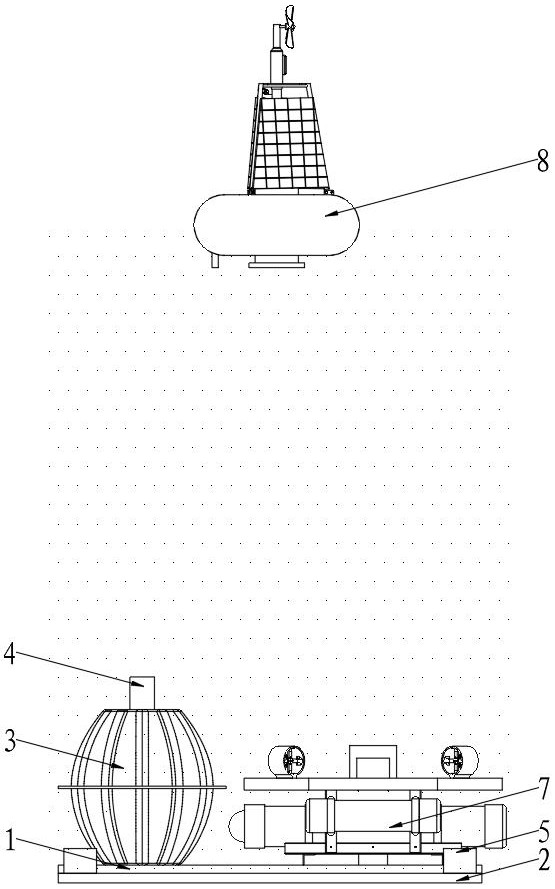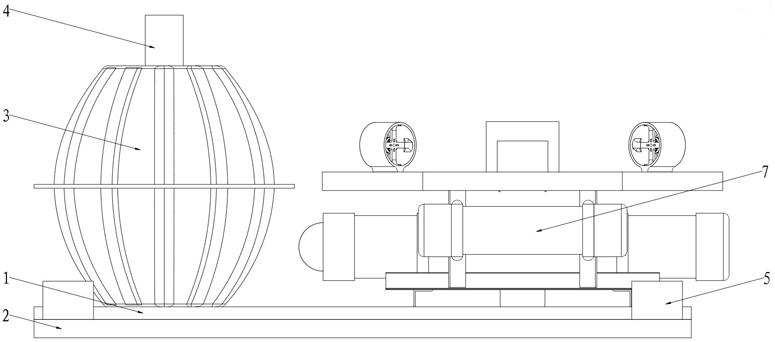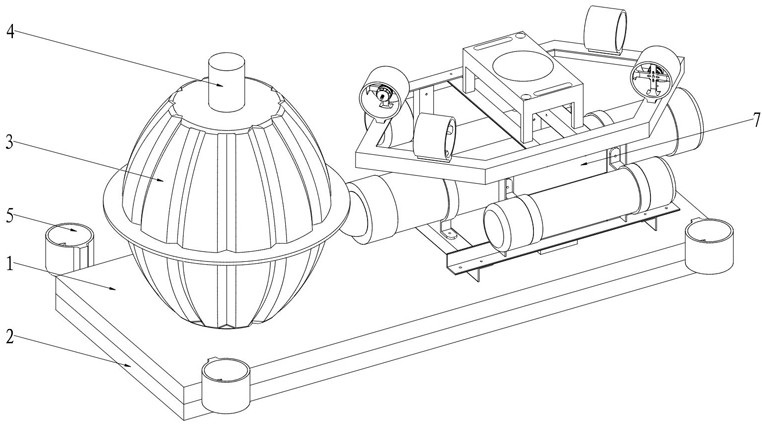Self-sinking type seabed earthquake acquisition device and method thereof
A collection device, self-sinking technology, applied in circuit devices, battery circuit devices, seismology for areas covered by water, etc., can solve problems such as time limit for marine seismographs to work
- Summary
- Abstract
- Description
- Claims
- Application Information
AI Technical Summary
Problems solved by technology
Method used
Image
Examples
Embodiment Construction
[0044] Exemplary embodiments of the present disclosure will be described in more detail below with reference to the accompanying drawings. While exemplary embodiments of the present disclosure are shown in the drawings, it should be understood that the present disclosure may be embodied in various forms and should not be limited by the embodiments set forth herein. Rather, these embodiments are provided so that the present disclosure will be more thoroughly understood, and will fully convey the scope of the present disclosure to those skilled in the art.
[0045] like Figure 1-Figure 12As shown, the embodiment of the present invention provides a self-sinking submarine seismic acquisition device, which includes a base 1, a counterweight 2 is arranged at the bottom of the base 1, a submarine seismometer 3 is arranged on one side of the top of the base 1, and the top of the base 1 is on the other side. A first power exchange device 6 is provided on one side, and a first power s...
PUM
 Login to View More
Login to View More Abstract
Description
Claims
Application Information
 Login to View More
Login to View More - Generate Ideas
- Intellectual Property
- Life Sciences
- Materials
- Tech Scout
- Unparalleled Data Quality
- Higher Quality Content
- 60% Fewer Hallucinations
Browse by: Latest US Patents, China's latest patents, Technical Efficacy Thesaurus, Application Domain, Technology Topic, Popular Technical Reports.
© 2025 PatSnap. All rights reserved.Legal|Privacy policy|Modern Slavery Act Transparency Statement|Sitemap|About US| Contact US: help@patsnap.com



